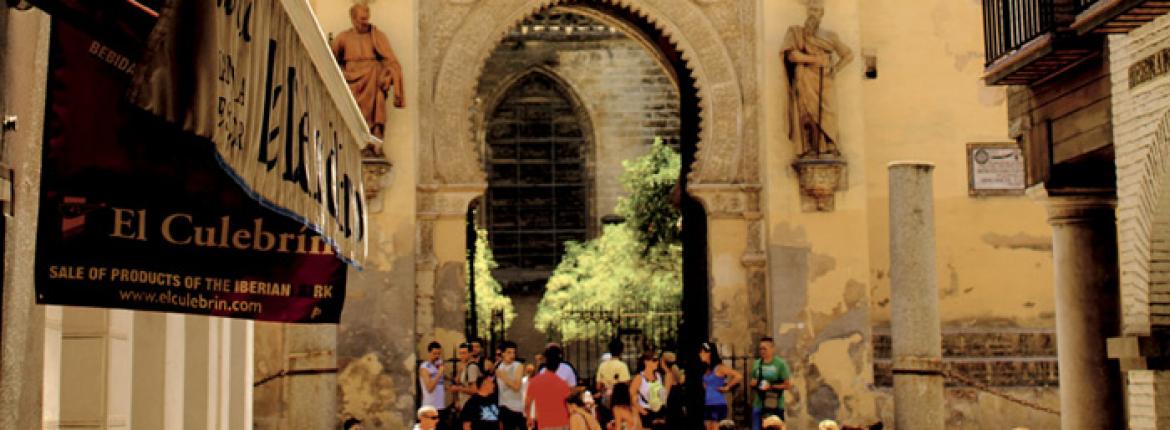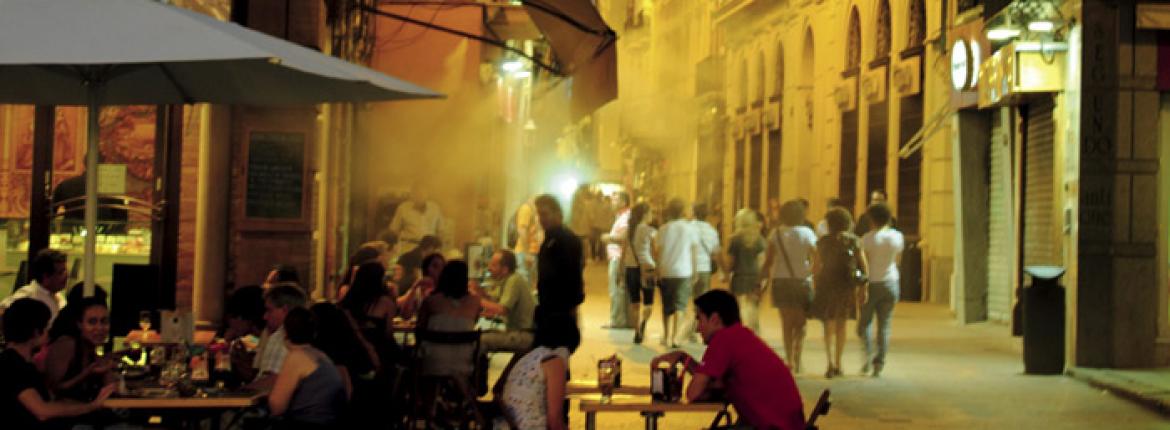No prizes for guessing they’re en route to a stag weekend in Spain. Thankfully not to Seville, but to Malaga, further down the coast.
As the elderly Spanish man sitting next to me on the plane observes: “If you want sun, sex and sangria, you go to the Costas. But if it’s culture, architecture and history you’re seeking, then head to Seville”.
This city of around 700,000 people may have been slower to bite the tourism apple than its brasher southern sisters, but this is where you go to experience the ‘real’ Spain. Seville is a city of toreadors (bullfighters) and flamenco, white-washed alleys, stunning Moorish buildings, and history that whispers from every corner. Don Juan hailed from here, as did Carmen, the cigarette worker heroine of Bizet’s opera: two characters who, between them, reveal much about this sexy and romantic city.
And then there’s the smell: it’s hard not to warm to a city where the heady fragrance of orange blossom tangs the air. Walk down any street with a spare patch of earth and the council will have planted a citrus tree; the fat juicy oranges that borrow their name from the city are free for the picking. No chance of the local homeless community getting scurvy, then.
We give thanks to City Hall’s tree planting policy, not for the opportunity it affords to Vitamin C load, but for the shade it provides. I had expected molasses-thick heat, but nothing can quite prepare you for 43 degrees; at 10.30pm the temperature gauge outside our hotel is still registering a figure in the late 30s. Perhaps that’s why Seville, lying in the dusty plains of Andalusia, is referred to as the ‘Frying Pan of Spain’. Fortunately, it’s the kind of heat that makes you feel glossy rather than dessicated.  Seville might be Spain’s fourth largest city, but its compact centre and knot of pedestrian-only alleys lend it to gentle strolling. The richest visual pickings are to be had east of the River Guadalquivir, around the wide central boulevard, Avenida de la Constitution. This area was once contained within the 12th century city walls, remnants of which you can still see if you look hard enough.
Seville might be Spain’s fourth largest city, but its compact centre and knot of pedestrian-only alleys lend it to gentle strolling. The richest visual pickings are to be had east of the River Guadalquivir, around the wide central boulevard, Avenida de la Constitution. This area was once contained within the 12th century city walls, remnants of which you can still see if you look hard enough.
Dominating proceedings is Seville’s cathedral, the largest Gothic cathedral in the world. Legend has it that, when it was being built in the 15th century to replace the old mosque, the aim was for a cathedral so big that future generations would think the architects mad for attempting it. They certainly achieved that: this monster boasts five naves and is a masterpiece of elaborate vaulting and richly decorated altars.
La Giralda, the bell tower of the original mosque, provides sweeping views over the city – reward for climbing 35 ramps, built instead of stairs so that horsemen could ride up. Seeking shade from the midday heat, we head into the stunning Alcázar, the Moorish palace and residence of numerous rulers of Christian and Muslim Spain. The ornate rooms, stone fretwork and endless arches have survived some 11 centuries. It’s too hot to spend long in the beautiful sunken gardens with their patios and fountains, though.
In search of somewhere to offload my Euro, I stray into the Plaza Nueva, which seems to consist of little else than shoe shops and banks. I conclude that all the locals do is walk to the bank.
Fortunately, my visit coincides with the citywide mid-summer sales. I find a pair of high strappy satin green shoes for five Euro (less than NZ$10); in Zara, I snag a pair of brown peep-toe suede boot/wedges for 15 Euro. In truth, the lowest point of my four-day trip comes when I spy a billboard for an outlet mall containing both Zara and Mango stores – and I’m on the way to the airport with no time to spare.  Along with shoe-shopping and banking, another local obsession is eating and drinking. Seville is widely regarded as the birthplace of tapas; the best eateries are tucked into the twisting lanes of the barrio Santa Cruz. We spend loads on ice cold aqua, sangria and chilled Manzanilla sherry – anything to rehydrate. And when we aren’t drinking, we are eating our body weight in seafood paella, bulbous olives, and calamari so fresh it could have walked out of the sea minutes before.
Along with shoe-shopping and banking, another local obsession is eating and drinking. Seville is widely regarded as the birthplace of tapas; the best eateries are tucked into the twisting lanes of the barrio Santa Cruz. We spend loads on ice cold aqua, sangria and chilled Manzanilla sherry – anything to rehydrate. And when we aren’t drinking, we are eating our body weight in seafood paella, bulbous olives, and calamari so fresh it could have walked out of the sea minutes before.
Timing is important in Seville – never lunch before 2.30pm or dine before 10pm. Thanks to the heat and the siesta, locals consider it totally uncool to go out before late. Seville is a city that doesn’t like to be told when to go to bed.
I am not a fan of bulls being tortured, so one of the downsides of this city, for me, is the constant reminders of this gruesome pastime. Bullfighting posters adorn every tapas bar, shop windows bulge with matador costumes and waiters offer bulls’ tails to chew on. Naturally, we give a wide berth to the Plaza de Toros where weekly events are held, and flick quickly past the bullfighting channel on TV.
One Spanish tradition we are keen to embrace is flamenco, a dance so sexy it hurts. Herded into a back-street bar where the collection of several hundred bodies raises the temperature even further, we watch slack-jawed as a 40-something, black-clad woman stomps and twirls her way across the stage, telling a story of angst, love and pain with the most exquisite facial and body expressions.
Not for the first time, I wish my ancestors had swerved north instead of heading south, so I’d be able to truly understand and appreciate the meaning behind the dance.
Still, we don’t travel to experience the familiar and, in Seville, you’ll find that challenges, excitement and thrills are about as common as the eponymous oranges.
And the only loud, drunk stag party you’re likely to encounter will be at the airport.
Photos by Martin Haughey
Reported by Sharon Stephenson for our AA Directions Winter 2011 issue





